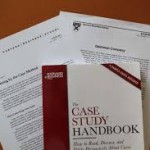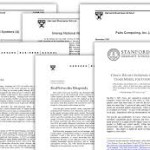“American Chemical Corp.” and the “Dixon Corporation: The Collinsville Plant.” are two wonderful HBS corporate finance case studies that covers the same Mergers & Acquisitions (M&A) transaction situation in the Chemical Industry in 1979. American Chemical Corp which is a large chemical manufacturer wants divests a sodium chlorate manufacturing plant in Collinsville, Alabama due to the larger M&A transaction that may trigger provisions of the US Antitrust regulations. Among the potential buyers was a specialty chemicals manufacturing company, Dixon Corporation. Both the American Chemical Corp. case study and the “Dixon Corporation: The Collinsville Plant case studies deal with the acquisition decision from the perspective of Dixon Corporation. Dixon Corporation has agreed to purchase the net assets of the Collinsville plant from American at a valuation of $12 million subject to its board of directors’ approval.
These cases are primarily corporate finance and valuation case studies but also has some elements of strategy and decision making with uncertainty. The main task: Corporate finance students are expected to take the role of a board of director or Dixon Corporation and answer the question:
If you were on the board of Dixon Corporation, would you approve the acquisition of the Collinsville plant for price of $12 million?
Other questions that can be asked on this case study include:
- Is the Collinsville Plant attractive strategically for Dixon Corporation?
- What discount rate would be appropriate to value the cash flows?
- Do you think the financing plan makes sense for the project for Dixon Corporation?
Corporate Finance Case Teaching & Tutoroing Points
These two case studies are rich in content and data. There are numerous teaching points for the “American Chemical Corp.” and the “Dixon Corporation: The Collinsville Plant.”
Discounted Cash Flow Approach to Valuation (DCF)
Although the computation of the appropriate beta and discount rate (cost of capital) may be the main teaching point, these two case studies beautifully reinforce the method and processes of Discounted Cash Flow Approach to valuation. The DCF valuation method is the basic approach to valuation taught in most corporate finance courses. (See our infographic on the Discounted Cash Flow Approach (DCF) method of valuation)
Adjusted Present Value Approach to Valuation (APV)
Adjusted Present Value approach to valuation is a very important and useful valuation technique and is taught mostly in the second finance courses at business schools. The Adjusted Present Value approach to valuation is especially useful when there the capital structure is uncertain and when debt to equity ratio is changing significantly. The case studies “American Chemical Corp.” and the “Dixon Corporation: The Collinsville Plant.” not only discuss the valuation of the Collinsville plant but also provide the specifics of financing the deal. Details on the types of loan and its repayment plan are provided. Because of the changing debt to equity ratios, the case is ideally suited to apply the Adjusted Present Value approach to valuation.
Computing the Cost of Equity using CAPM
Students are expected to understand the difference between the costs of different types of capital. The Cost of Equity Capital will be required should students chose the APV method of valuation. Students will need to seek out the inputs for the CAPM formula from the data in the case and or make assumptions.
Computing the Weighted Average Cost of Capital (WACC)
The Weighted Average Cost of Capital (WACC) will be required should students chose the DCF method of valuation. The inputs for the WACC formula are not given on a platter in these cases. Both the case studies “American Chemical Corp.” and the “Dixon Corporation: The Collinsville Plant” give students a lot of data and students are expected to wade through all this to be able to select only what is needed to compute the WACC. Assumptions for data not given also need to be made.
Risk and Beta in Corporate Finance
This case study helps students understand that the discount rate incorporates risk and that different types of industries and cash flows bring different levels of risk. Students are able to understand what betas are, the different types of betas (asset beta vs. equity beta). This case study teaches students what is and how to identify “Pure Play” firms and their betas.
Un-levering and Re-levering betas
The case studies provide students an opportunity to understand the difference between financial risk and operating risk. It helps students understand and appreciate the fact that the capital structure contributes to risk.
Forecasting
Both the case studies “American Chemical Corp.” and the “Dixon Corporation: The Collinsville Plant.” provide a pro forma financial statement forecast for 5 years. Therefore students can use this as their starting point for valuation professors can give students practice in forecasting financial statements by requiring them to do a 10 year pro forma financial statement forecast and use the 10 year cash flow for valuation.
Dealing with uncertainty in finance
The case studies “American Chemical Corp.” and the “Dixon Corporation: The Collinsville Plant” introduce a level of uncertainty in the future cash flows by laying out the possibility of applying a new technology in the manufacturing process. The costs associated with this technology will be different and so the cash flows and therefore the present value of these cash flows are going to be different if the technology is successful. Students will need to learn how to incorporate this uncertainty into their decision making process.
Free Cash Flow Computations
While both the case studies “American Chemical Corp.” and the “Dixon Corporation: The Collinsville Plant.” provide a pro forma financial statement forecast for 5 years, these case studies do not give you the free cash flow required for the valuation. Corporate finance students are expected to know how to work out the free cash flow from the financial statements. Seeking out information on or making assumptions as needed to get the depreciation, working capital and CAPEX numbers are part of the learning experience in these two cases.
Un-answered questions and assumptions
What happens to the Collinsville Plant after the 10 year life of the technology is not stated. Market risk premiums are not provided. Students learn to understand the need to make assumptions and understand how these important assumption will play into the valuation of the Collinsville Plant.
GraduateTutor.com can provide you tutoring for the two case studies “American Chemical Corp.” and the “Dixon Corporation: The Collinsville Plant” or thousands of similar case studies in corporate finance, financial modeling, accounting, statistics and operations management. Please fill in the form below to start your tutoring request.
Please remember that HBS cases are developed solely as the basis for class discussion. These cases and related 
CITATION
Fruhan, William E., Jr., and John P. Goldsberry III. “American Chemical Corp.” Harvard Business School Case 280-102, March 1980. (Revised December 1995.)
Kester, W. Carl. “Dixon Corporation: The Collinsville Plant.” Harvard Business School Case 298-165, June 1998. (Revised June 1999.)
